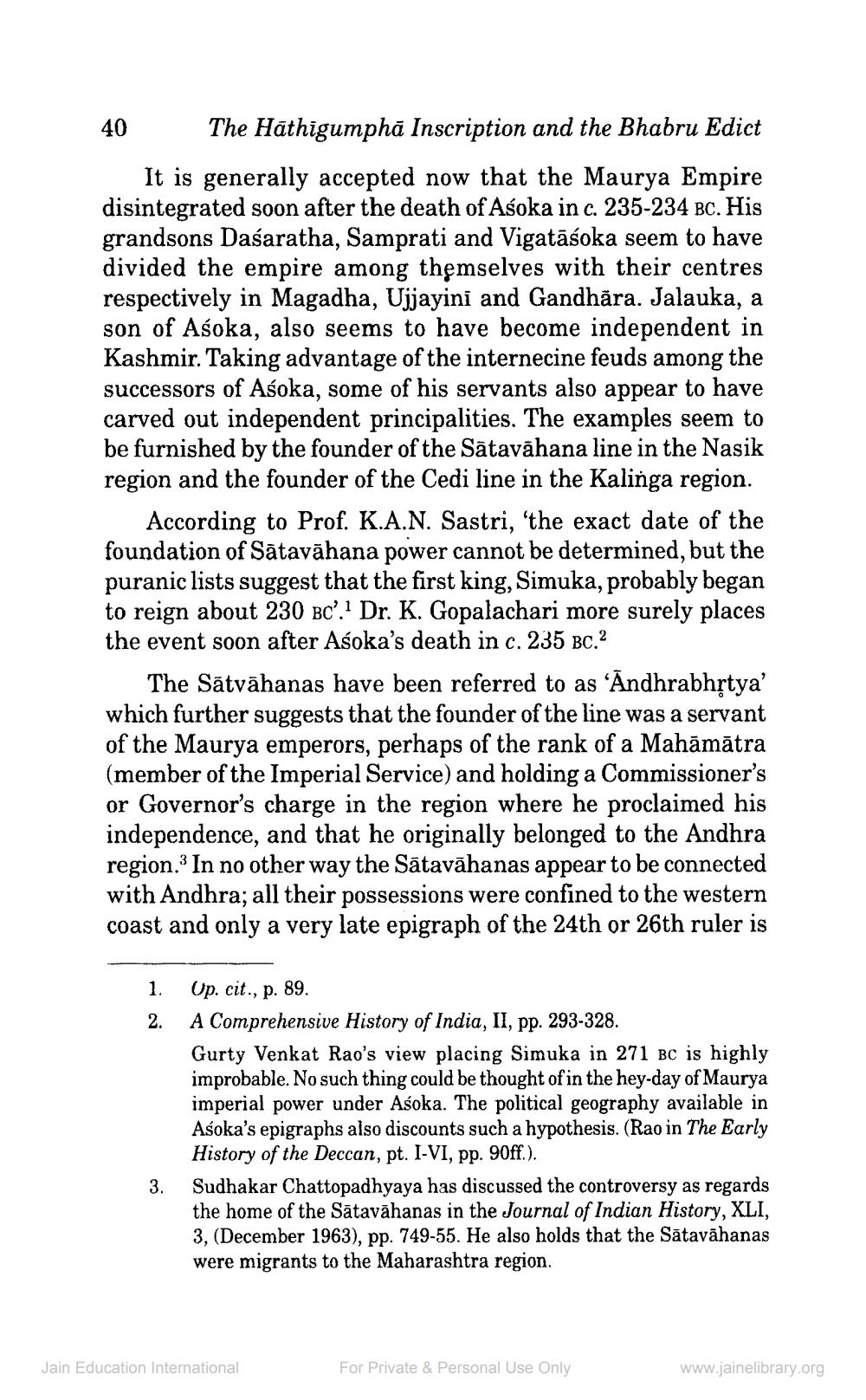________________
40 The Häthigumpha Inscription and the Bhabru Edict
It is generally accepted now that the Maurya Empire disintegrated soon after the death of Asoka in c. 235-234 BC. His grandsons Dasaratha, Samprati and Vigatāśoka seem to have divided the empire among themselves with their centres respectively in Magadha, Ujjayini and Gandhāra. Jalauka, a son of Asoka, also seems to have become independent in Kashmir. Taking advantage of the internecine feuds among the successors of Asoka, some of his servants also appear to have carved out independent principalities. The examples seem to be furnished by the founder of the Sātavāhana line in the Nasik region and the founder of the Cedi line in the Kalinga region.
According to Prof. K.A.N. Sastri, 'the exact date of the foundation of Sātavāhana power cannot be determined, but the puranic lists suggest that the first king, Simuka, probably began to reign about 230 Bc'.' Dr. K. Gopalachari more surely places the event soon after Asoka's death in c. 235 BC.?
The Sātvāhanas have been referred to as 'Andhrabhrtya' which further suggests that the founder of the line was a servant of the Maurya emperors, perhaps of the rank of a Mahāmātra (member of the Imperial Service) and holding a Commissioner's or Governor's charge in the region where he proclaimed his independence, and that he originally belonged to the Andhra region. In no other way the Sātavāhanas appear to be connected with Andhra; all their possessions were confined to the western coast and only a very late epigraph of the 24th or 26th ruler is
1. 2.
Op. cit., p. 89. A Comprehensive History of India, II, pp. 293-328. Gurty Venkat Rao's view placing Simuka in 271 bc is highly improbable. No such thing could be thought of in the hey-day of Maurya imperial power under Asoka. The political geography available in
hs also discounts such a hypothesis. (Rao in The Early History of the Deccan, pt. I-VI, pp. 90ff.). Sudhakar Chattopadhyaya has discussed the controversy as regards the home of the Sātavāhanas in the Journal of Indian History, XLI, 3, (December 1963), pp. 749-55. He also holds that the Sātavāhanas were migrants to the Maharashtra region.
in The Early
Jain Education International
For Private & Personal Use Only
www.jainelibrary.org




